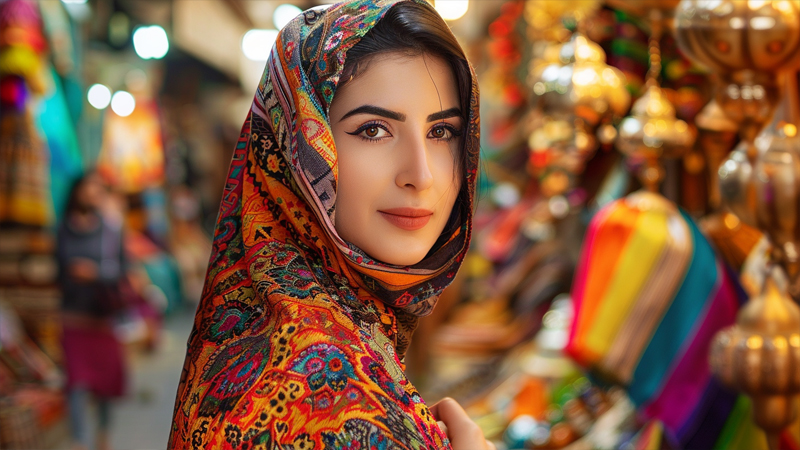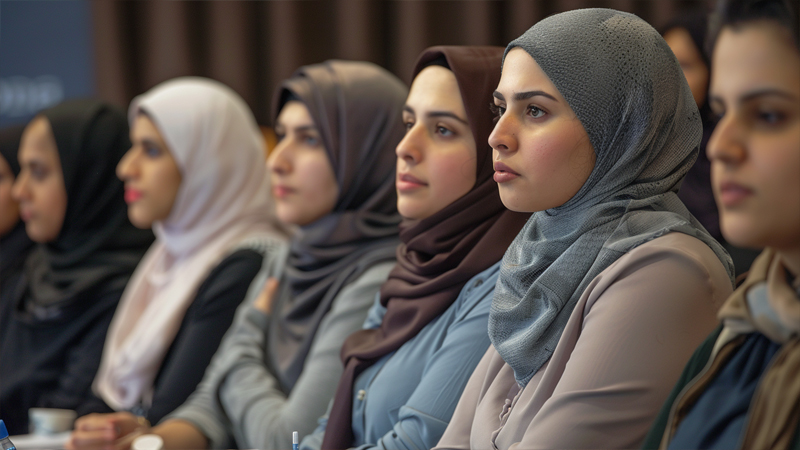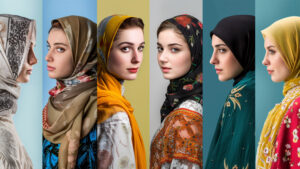
I remember the first time I wrapped a scarf around my head. It felt strange, like I was stepping into a role I didn’t fully understand. But over time, it became a part of me.
Head covering in Islam is rooted in religious teachings, historical traditions, and personal spirituality, offering women a way to express faith, modesty, and identity.
Let’s unravel this practice together.
What do religious teachings say about head covering?
When I asked my grandmother why she wore a hijab, she opened the Quran1 and pointed to a verse: “Tell the believing women to draw their headscarves over their chests.”
Islamic teachings emphasize head covering as a form of modesty and obedience to God, with Quranic verses and Hadiths guiding the practice.

The spiritual blueprint
The Quran doesn’t just mention head covering—it ties it to a broader concept of haya2 (modesty). For me, this means:
- Modesty in dress: Covering the head and body
- Modesty in behavior: Lowering the gaze, speaking kindly
- Modesty in intention: Wearing it for God, not societal pressure
But here’s the thing: the Quran doesn’t prescribe a specific style. That’s where history and culture step in.
How did history shape the practice of head covering?
I once visited a museum in Istanbul3 and saw ancient mosaics4 of women draped in flowing fabrics. My guide said, “Head covering wasn’t invented by Islam—it was adopted and adapted.”
Head covering predates Islam, with roots in ancient Mesopotamia, Byzantium, and Persia. Islam refined it as a spiritual practice tied to identity and dignity.

A practice older than time
In pre-Islamic Arabia5, headscarves were a status symbol6—only elite women wore them. Islam democratized the practice, making it accessible to all women as a sign of piety.
| Era | Significance of Head Covering |
|---|---|
| Ancient Times | Status symbol for elite women |
| Early Islam | Symbol of modesty and equality |
| Modern Era | Expression of faith and identity |
This historical lens helped me see hijab not as a burden, but as a bridge connecting me to centuries of women who chose dignity over conformity.
Why do women choose to cover their heads today?
My friend Layla once told me, “I wear hijab because it reminds me who I am—a servant of God, not a product for the world to consume.”
Women cover their heads for deeply personal reasons: spiritual connection, cultural pride, or reclaiming autonomy in a world obsessed with appearances.

The quiet rebellion
For some, hijab is a shield. For others, it’s a crown. For me, it’s both. It’s saying, “Judge me by my character, not my curves.”
Here’s what motivates women I’ve met:
- Spiritual fulfillment: Feeling closer to God
- Cultural identity: Honoring family traditions
- Feminist statement: Rejecting objectification
- Personal choice: Owning their narrative
But not every Muslim woman covers her head—and that’s where diversity comes in.
How do diverse interpretations affect the practice?
At a university panel, I heard a Muslim woman say, “I don’t wear hijab, but my faith is in my heart, not on my head.” It sparked a lively debate.
Muslim women interpret head covering differently—some see it as obligatory, others as optional, reflecting a spectrum of beliefs and cultural influences.

The spectrum of faith
In Malaysia, I met women who wore hijab only during prayers. In Egypt, some wore it as teens, then removed it later. In the West, many see it as a personal choice7.
This diversity taught me that faith isn’t one-size-fits-all. It’s a journey, and head covering is just one stop along the way.
Conclusion
Head covering in Islam is a tapestry of faith, history, and personal choice—woven differently by every woman who wears it.
-
Explore this link to gain deeper insights into Quranic verses on head covering, enriching your understanding of its significance in Islam. ↩
-
Learn about the concept of haya and its importance in Islamic teachings on modesty. ↩
-
Explore Istanbul's rich history to understand how it shaped the practice of head covering in Islamic culture. ↩
-
Explore how ancient mosaics illustrate the evolution of head covering practices, enriching your understanding of cultural heritage. ↩
-
Explore this link to understand how head covering evolved from a status symbol in pre-Islamic Arabia to a spiritual practice in Islam. ↩
-
Explore this resource to understand how head covering evolved from a status symbol to a spiritual practice across cultures. ↩
-
Examine the role of personal choice in the decision to wear a hijab and its implications for autonomy. ↩




